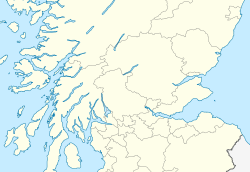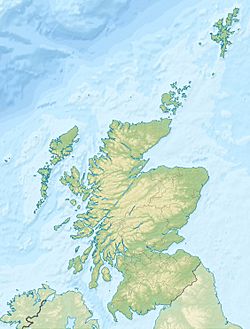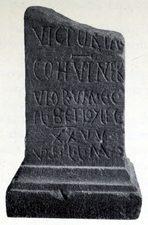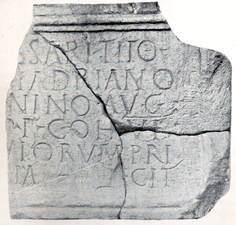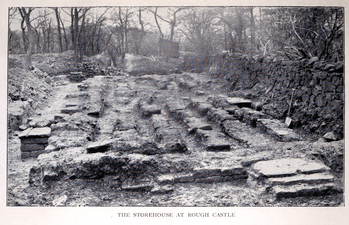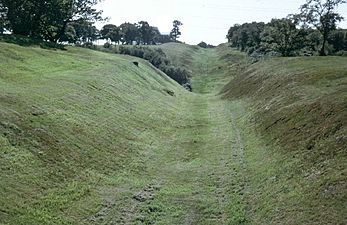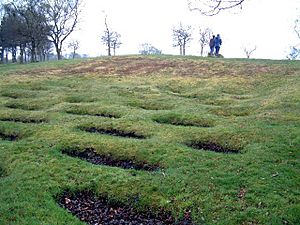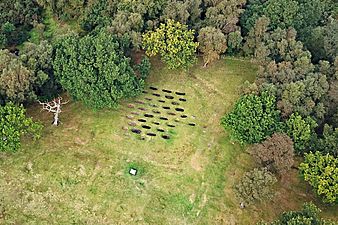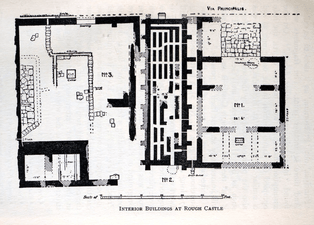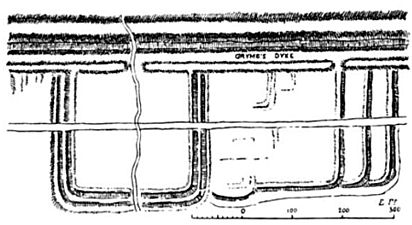Rough Castle Fort facts for kids
Quick facts for kids Rough Castle Fort |
|
|---|---|
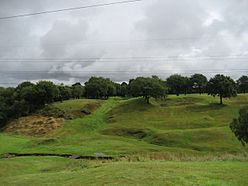 |
|
| Founded during the reign of | Antoninus Pius |
| Founded | 142 AD |
| Place in the Roman world | |
| Province | Britannia |
| Structure | |
| — Turf structure — | |
| Size and area | (0.4 ha) |
| Stationed military units | |
| — Cohorts — | |
| VI Nerviorum | |
| Location | |
| Coordinates | 55°59′52″N 3°51′22″W / 55.997800°N 3.856000°W |
| Town | Near Tamfourhill |
| County | Falkirk |
| Country | Scotland |
| Site notes | |
| Condition | Ruined |
Rough Castle Fort was a Roman fort in Scotland. It was built as part of the Antonine Wall, a large barrier across the country. You can find it about 2 kilometers southeast of Bonnybridge, near Tamfourhill. Today, the National Trust for Scotland looks after this historic site.
Contents
The Antonine Wall and Rough Castle
The Antonine Wall was built by the Romans around 143 AD. It was a huge wall that stretched across Scotland. The wall helped the Romans control their territory. Rough Castle Fort was one of the many forts along this wall.
Building the Fort
Rough Castle Fort is one of the best-preserved forts on the Antonine Wall. It was built right against the back of the main wall. The fort had strong ramparts (walls) made of turf, which were about 6 meters thick. It was also surrounded by deep ditches for extra protection.
Getting In and Out
There were gateways through the main Antonine Wall to the north. Other gates were on the other three sides of the fort. Causeways (raised paths) were built across the ditches. These made it easy for soldiers to go in and out of the fort.
Inside the Fort
Rough Castle was one of the smaller forts on the wall. It covered an area of about 4,000 square meters. The buildings inside were made of stone, which was not always common back then.
- Commander's House: Where the fort's leader lived.
- Barracks: Sleeping areas for the soldiers.
- Headquarters: The main office for the fort.
- Bath House: A place for soldiers to wash and relax.
- Granary: A building to store grain and food.
While the original buildings are gone, their foundations were found. Archaeologists discovered them during digs in 1902-03, 1932, and 1957-61. You can even watch a video that shows what the site might have looked like.
Discoveries at Rough Castle
Many interesting things have been found at Rough Castle Fort. These finds help us learn about the Roman soldiers who lived there.
Who Lived Here?
Artifacts found at the fort tell us about the soldiers. Inscriptions show that about 480 men lived there. They were part of the Cohors VI Nerviorum. These were foot soldiers from a tribe called the Nervii, who came from an area that is now part of France and Belgium.
The Military Road
A military road ran along the south side of the Antonine Wall. This road connected all the forts, making travel easy. A good section of this road is still visible today. There is also a well-preserved part of the rampart and ditch to the west of the fort.
Special Finds
- Altar to Victory: In 1843, an altar dedicated to the Roman goddess of victory, Victoria, was found south of the fort.
- Other Items: Archaeologists also found a bangle, pieces of glass from a window, and leather shoes.
Hidden Traps: The Lilia
One interesting defense feature was discovered during excavations. These were a series of pits called lilia. They were located northwest of the causeway across the Antonine ditch. The lilia would have held sharpened stakes at the bottom. They were placed to protect the vulnerable northern gateway through the wall.
Other Structures Nearby
Near the fort, there was a turf platform. This might have been used for beacons or signaling. There were also gravel pits. These pits provided materials for building the military road. The bath house was built on a separate area next to the fort, called an annexe. We know that Flavius Betto was one of the commanding officers at Rough Castle.
-
A stone tablet from the fort's headquarters, dedicated to Emperor Antoninus Pius.
-
A part of the Antonine Wall near Rough Castle Fort.
-
A drawing of Rough Castle on the Antonine Wall from 1755 by William Roy.
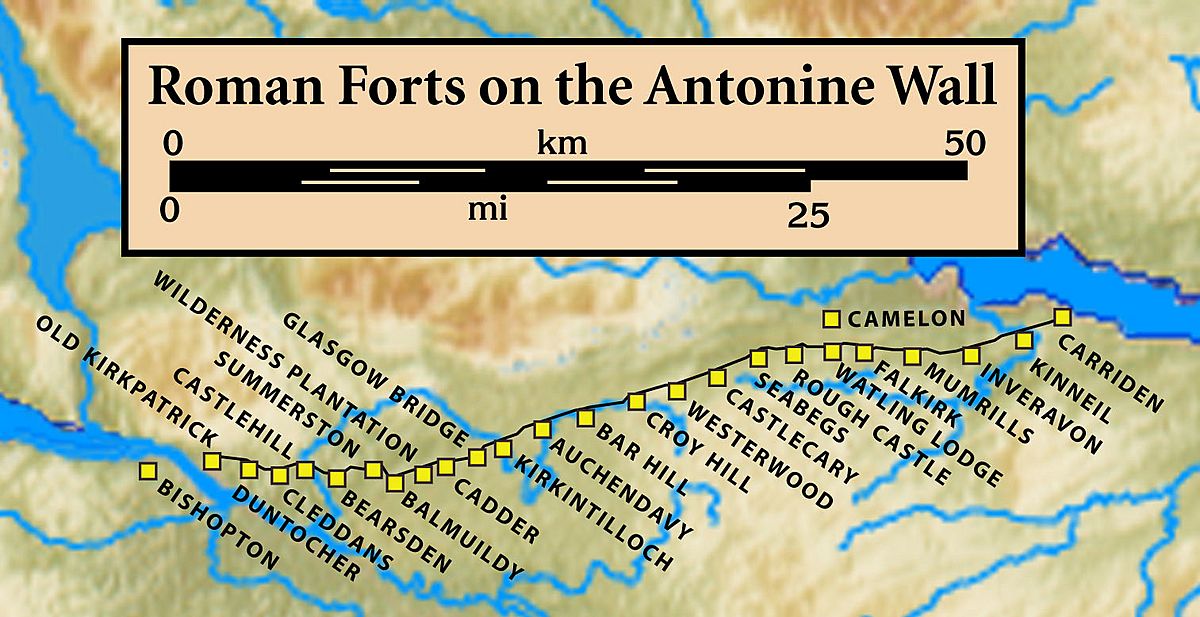
Recent Events
In November 2018, a special sound and light show was held at Rough Castle. This event was organized to encourage more people to visit the site and learn about its history.


